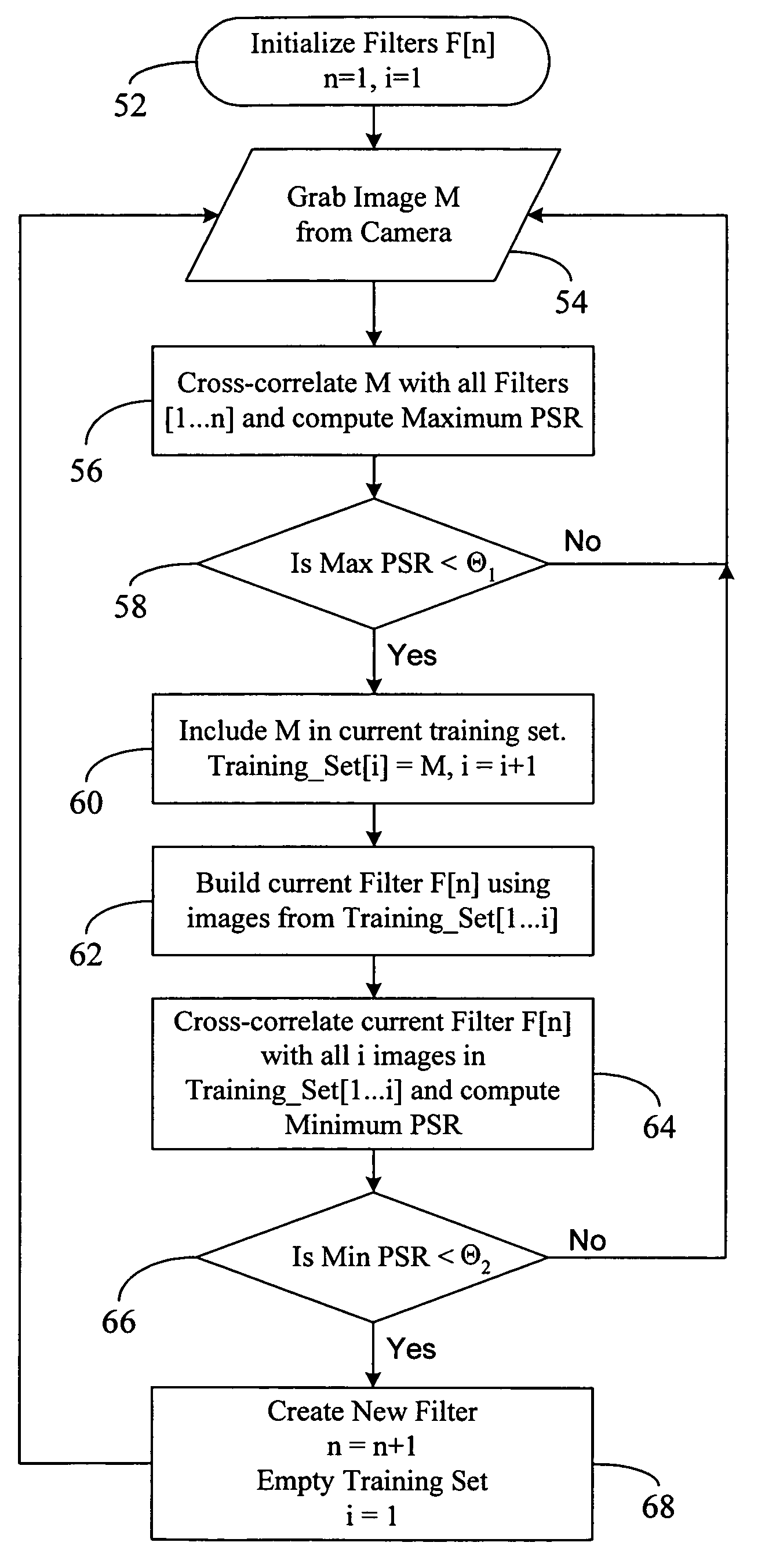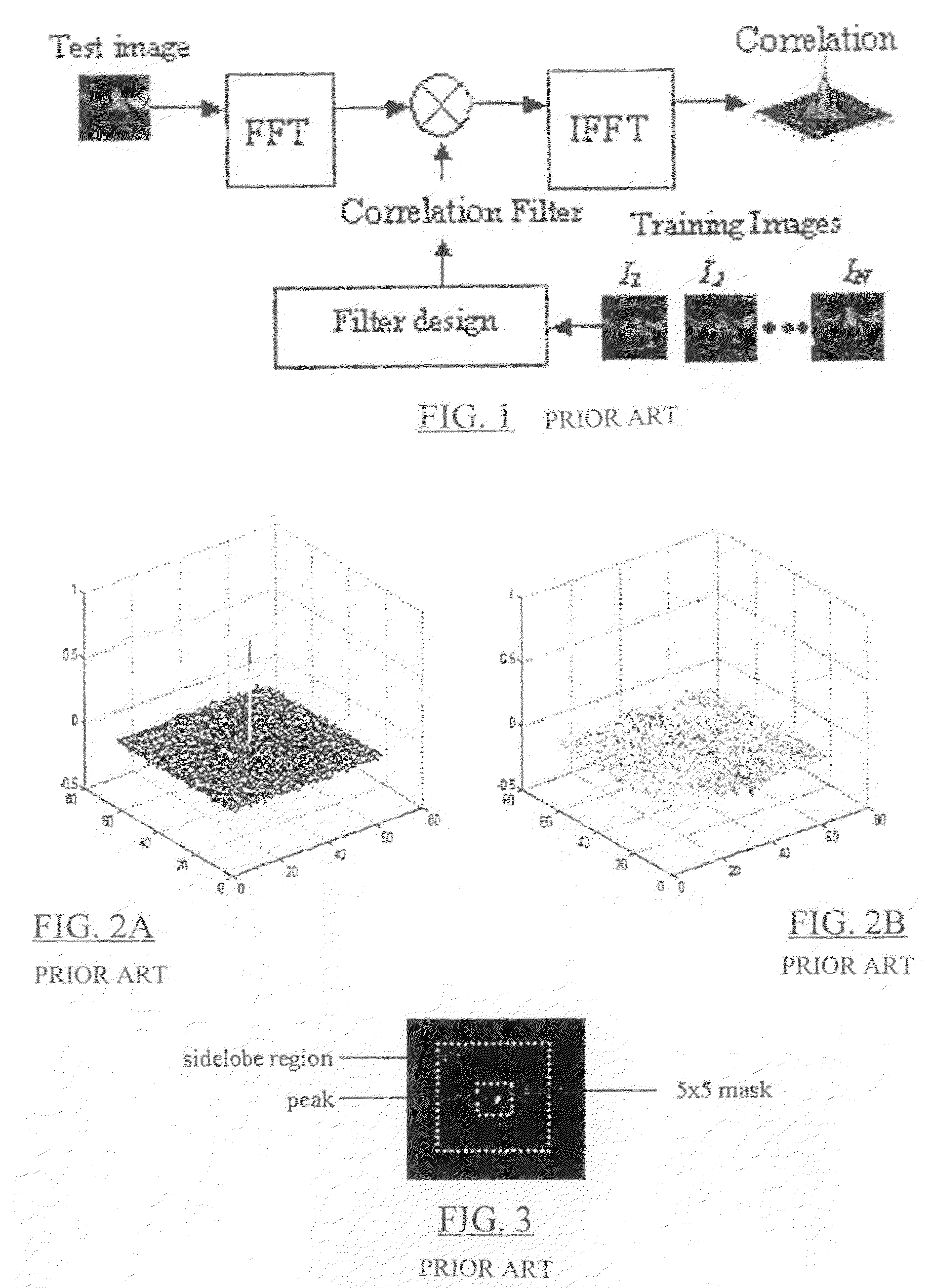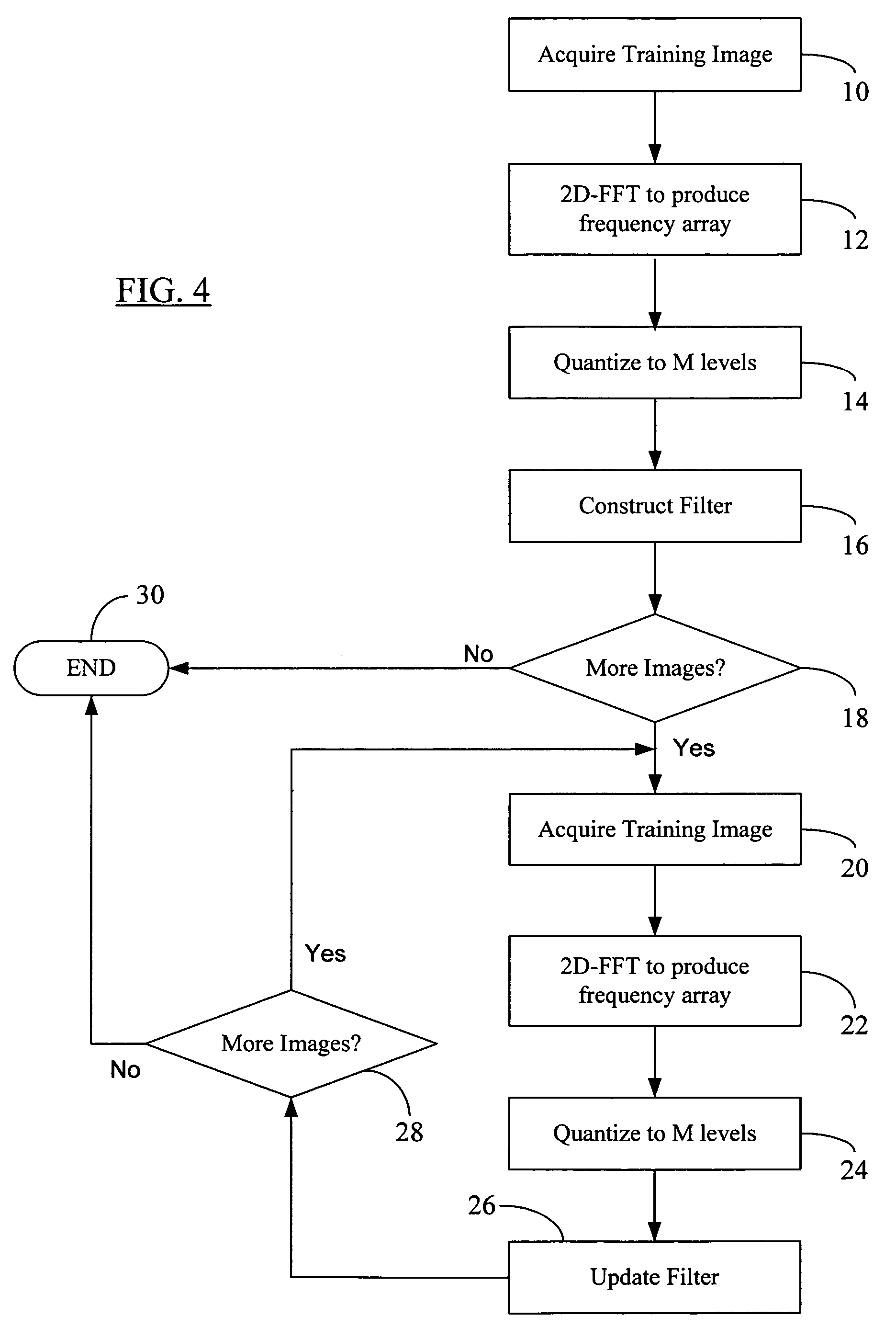Reduced complexity correlation filters
a correlation filter and complexity reduction technology, applied in the field of image pattern recognition, can solve the problems of low light intensity of the correlation plane detector, low memory availability, and inability to meet the needs of practical pattern recognition, and achieve the effects of reducing storage and computational complexity, reducing the storage and computational complexity of both the filter and the test and training image, and increasing recognition performan
- Summary
- Abstract
- Description
- Claims
- Application Information
AI Technical Summary
Benefits of technology
Problems solved by technology
Method used
Image
Examples
Embodiment Construction
[0065]Reference will now be made in detail to some embodiments of the present disclosure, examples of which are illustrated in the accompanying figures. It is to be understood that the figures and descriptions of the present disclosure included herein illustrate and describe elements that are of particular relevance to the present disclosure, while eliminating, for the sake of clarity, other elements found in typical digital filters or correlation filters. It is noted at the outset that the terms “connected”, “connecting,”“electrically connected,” etc., are used interchangeably herein to generally refer to the condition of being electrically connected.
[0066]Correlation filters owe their origins to optical processing because the 2-D (two dimensional) Fourier transform operation needed for performing 2-D correlations could be naturally accomplished with properties of light such as diffraction and propagation. However, given the current high speeds at which fast Fourier transforms (FFT...
PUM
 Login to View More
Login to View More Abstract
Description
Claims
Application Information
 Login to View More
Login to View More - R&D
- Intellectual Property
- Life Sciences
- Materials
- Tech Scout
- Unparalleled Data Quality
- Higher Quality Content
- 60% Fewer Hallucinations
Browse by: Latest US Patents, China's latest patents, Technical Efficacy Thesaurus, Application Domain, Technology Topic, Popular Technical Reports.
© 2025 PatSnap. All rights reserved.Legal|Privacy policy|Modern Slavery Act Transparency Statement|Sitemap|About US| Contact US: help@patsnap.com



